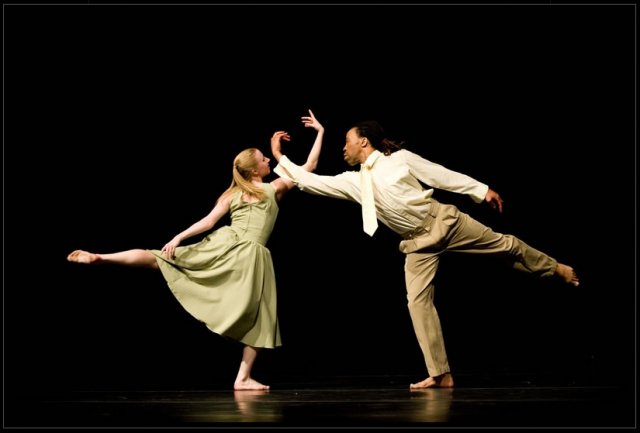Earlier, we looked at the differences between ballet and modern dance. One of those main differences—whether or not the performance tells a story—can confuse some people. This brings us to one common phrase uttered by the virgin dance audience:
“I have no idea what’s going on right now.”
Dance doesn’t always have to tell a story, as songs don’t always have to have lyrics. There’s no right or wrong way to perform, just two very different results. In this article, we’ll check out the different methods behind a dance performance, as well as tips on how to watch a show so you know just what the heck is going on.
Dancing to Tell a Story

It’s not the only style of dance that people use to tell a story, but classical ballet almost always has a cohesive storyline. Telling that story through dance doesn’t just require steps. Music, facial expressions, costumes and lighting are also very important elements in producing a successful ballet.
Imagine The Nutcracker without the colorful costumes or music. Boring! The Nutcracker ballet, for example, is based on a story about a young girl who dreams of a Nutcracker Prince and a fierce battle against a Mouse King with seven heads. Usually these types of performances are fairy tales or very well-known stories. Many ballets also incorporate the use of pantomime to convey important parts of the story.
While ballets that have concrete storylines are easier to watch for beginner audiences, other dances are just as important and enjoyable to watch.
Dance for the Sake of Dance
Sometimes dance can give an abstract take on certain situations, such as relationships, emotions or historical events. One example of this type of dance is Martha Graham’s Appalachian Spring…
…which was based on a score by Aaron Copland and a loose story line about a spring celebration in the 1800s of American pioneers. Apex’s recent performance of The Jungle Book in Parker was based on a story by Rudyard Kipling, but used movement to tell it rather than involving strict pantomiming.
But dance doesn’t always have to have a point. Sometimes dance is just for the sake of dance, a popular theme in contemporary and modern choreography. Many pieces like this can find inspiration in music, a piece of art, technology, politics, current events—anything is game for a choreographer to capture it and turn it into a beautiful performance. Apex’s upcoming show, Imagine is a perfect example of a performance inspired by dance and technology.


I think I win the award for never knowing the story within any dance show, even the shows I am in…